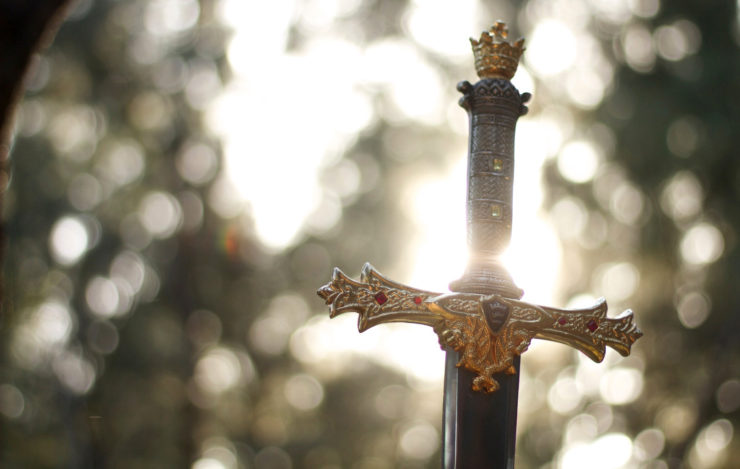Howard: I suppose the first thing we should do is lay the groundwork. This is about FORGOTTEN fantasy swords, people—that doesn’t necessarily mean so obscure that no one’s ever heard of them, and it also doesn’t mean every sword-wielding character ever created. I’m thinking we should focus on neglected characters that ought to get discussed, celebrated, or read more often. Especially read more.
Todd: S’right.
Howard: I also think we ought to avoid characters who aren’t forgotten. Conan, say.
Todd: Dammit, there’s too many rules already. Let’s just get started.
Howard: All right then, I’ll cheat and nominate a character who’s not even technically a fantasy character. The trick is that he was created by Harold Lamb, who had a huge influence on sword-and-sorcery prior to its invention by Robert E. Howard, creator of the aforementioned Conan. Howard named Harold Lamb as a favorite author, and it’s easy to see why. His character’s adventures have almost all the same characteristics as a sword-and-sorcery tale.
Todd: Jesus, Jones. We’re barely 200 words in, and you’re on about Lamb already? Okay, fine. Lemme reeeeaach across my desk here, grab my copy of Wolf of the Steppes, the first volume of The Complete Cossack Adventures, written by Harold Lamb and edited by—hey, would you look at that! Howard Andrew Jones!—and settle in. Because we’re talking about Khlit the Odyssean Cossack here, right?
Howard: You got it. And you’re just mad you didn’t think of him first.
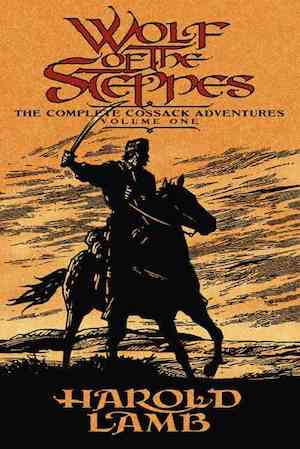
Todd: Maybe. But I’ll give you this—Khlit the Cossack is an excellent choice. For starters, he aces the prime requisite of a truly great fantasy swordsman: the man finds himself in some absolutely epic battles.
Howard: I wouldn’t have spent years trying to get just ANYONE back into print. Lamb was a master. I keep trying to tell anyone who loves adventure fantasy that they need to read his work, and I feel like I’m shouting into the wind. These are great stories, full of epic adventures that are only one step removed from sword-and-sorcery. Almost everything you find in sword-and-sorcery is in one of Khlit the Cossack’s adventures!
Todd: And Khlit has a magic sword! Well, about as magical as you can get in a pulp story with no actual magic in it. Which is actually pretty magical, by most standards. The sword was handed down through the generations from Khlit’s ancestor, a great Khan of the Kallmark Tatars and descendant of Genghis Khan. That’s some serious sword juju right there.
Howard: I’m curious to hear what you think of “The Mighty Manslayer,” since you recently read it for the first time and come to it with fresh eyes.
Todd: I’m pleased you mentioned that one, since it’s probably my favorite. It’s a novella that originally appeared in the pulp magazine Adventure in 1918. In many ways it reads like the original prototype for the sword-and-sorcery epic. Khlit is hired by an enigmatic merchant for a dangerous expedition across a vast and dangerous desert, in search of the lost tomb of none other than Genghis Khan himself—and the unfathomable riches that lie within. To get there, Khlit has to contend with evil sorcerers, spies, an invading army, and clever—and very deadly—traps in the tomb itself. There are twists and turns, reversals and betrayals, and the story ends with a desperate battle against a Chinese army, with Khlit facing overwhelming odds. Through it all Khlit proves himself an unsurpassed swordsman, of course, but he also demonstrates that much rarer quality that all the men and women on our list share. They possess a level of daring, courage, and audacity that takes our breath away, and fires the imagination of the reader. In the closing pages of “The Mighty Manslayer” Khlit dares things I don’t think I’ve seen any other character attempt. It makes for riveting reading.
Howard: I’m glad you dig “The Mighty Manslayer,” but you need to advance further into his canon, because there are other stories that are at least as good. There are 18 stories featuring Khlit (and he is briefly mentioned in two others). It’s astonishing to see how quickly Lamb became good at crafting his fiction: the first, short Cossack tale was tentative, the second was pretty good, the third better still, and then he really hit his stride. He wrote a whole slew of the best ones back to back, one after the other, as Khlit slowly winds his way east. Each stands alone, but each builds upon its predecessors. But hey, maybe that’s enough about this guy; I think there was a great female warrior and swordsperson you wanted to discuss next!
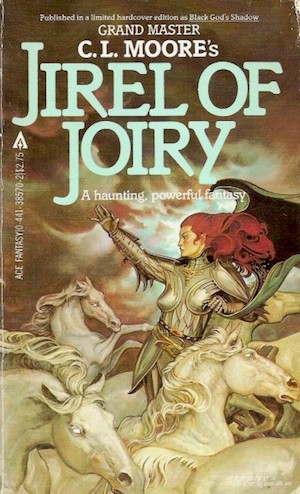
Todd: Yes there is: Jirel of Joiry, one of the first great sword-and-sorcery heroes—in fact, I would argue one of the greatest. She was created by the masterful pulp writer C.L Moore, who also created the popular space rogue Northwest Smith, and authored numerous well loved science fiction pulp tales, including “No Woman Born,” and “Vintage Season,” that last one with her husband, Henry Kuttner.
Howard: Kuttner and Moore. Two great talents. Once they started writing together do you know that one would simply get up from the typewriter to take a break and the other one could sit down and take over? That’s how well their voices and styles blended.
Todd: When I’m writing and I take a break, my wife sometimes sits down and finishes my coffee. That’s how good a blend it is.
Howard: …Anyway, the first Jirel story pre-dates their collaboration. There’s a short series of them, but to my mind the first one, “Black God’s Kiss,” is the best and strongest.
Todd: She’s not as forgotten as Khlit, but Jirel isn’t as well remembered as she used to be. In fact, if Netflix had been around in the 50s (and how cool would THAT have been, with bike messengers delivering these giant movie reels to subscribers every week?), Jirel of Joiry would have been a shoe-in for a sumptuous Netflix mini-series. Fans would have loved it.
Howard: Man, that WOULD have been cool. Can you imagine the black-and-white serials Netflix would’ve made in the 1930s?
Todd: I imagine it every day, my friend. “Black God’s Kiss” is one of the early classics of sword-and-sorcery, originally published in the October 1934 issue of Weird Tales. It’s a crazy tale, really. Jirel’s fortress in medieval France falls to the tall and handsome conqueror Guillaume, and when he unmasks its lord—and greatest defender—Jirel, and discovers she is a woman, he forces a kiss on her. Enraged, Jirel plots her escape. But not from the castle…instead, she takes a secret tunnel deep in the dungeons to a vast and strange demon-filed realm. There she hopes to find a dark weapon she can use to wreak terrible revenge on Guillaume, even though she knows the fate of all those who traffic with demons. What she finds is terrible indeed, and she gets her revenge, of a sort. And a lesson in the cost of dealing with dark forces.
Howard: Moore was phenomenal with both pacing AND atmosphere. I keep comparing her to William Hope Hodgson, because both can evoke suspense in the same way with weird dreamy imagery, but the older I get, the more obscure both authors become, so I’m not sure that comparison actually helps anyone…
Todd: Why does Jirel belong on this list? She’s absolutely lethal with a blade, of course, but I don’t think that’s her defining virtue. When I think of Jirel of Joiry, I think of courage and grit. And she’s a tragic figure, like many of the great S&S heroes.
Howard: I wouldn’t say that she’s completely tragic, but she certainly experiences tragedy.
Todd: Oh, come on! [Spoiler alert – if you don’t want to know the ending of “Black God’s Kiss,” skip to the end of the paragraph.] It’s only when Jirel engineers Guillaume’s gruesome end that she realizes the overpowering emotion she felt wasn’t hatred at all, but deeply repressed desire. She’s called up dark forces that traffic only in tragedy, and destroyed the only man she’s ever loved. Setting aside how deeply messed up that is [Spoiler alert 2 – IT’S DEEPLY MESSED UP], I still think it qualifies as tragic.
Howard: In any case, Moore’s Jirel of Joiry tales are definitely worth a read, so long as you keep in mind a caveat: I think it’s generally best not to read a bunch of stories about one character all in a row, because you might tire of the writer’s style or thematic preferences, which could begin to feel repetitive. In the case of the Khlit the Cossack stories I think you’d be okay, because they read much more like an episodic TV series. For Jirel, though, because there’s a sameness in plotting and repeated themes, read back-to-back the greatness of the fiction might not be apparent.
Todd: Okay, time for a public service announcement. The five Jirel stories, except for “Quest of the Starstone,” appear in the collection Jirel of Joiry (1969), and in the Gollancz Fantasy Masterworks compendium Black Gods and Scarlet Dreams (2002). All six were gathered in Black God’s Kiss (2007), from Paizo Publishing‘s fine Planet Stories imprint.
Harold Lamb’s Khlit the Cossack tales were collected in four volumes from Bison Books, all edited by the illustrious Howard Andrew Jones: Wolf of the Steppes, Warriors of the Steppes, Riders of the Steppes, and Swords of the Steppes. All are still in print, more than a decade after they first appeared. I think this Lamb guy might be popular some day.
Back to you for our next subject, Mr. Jones.
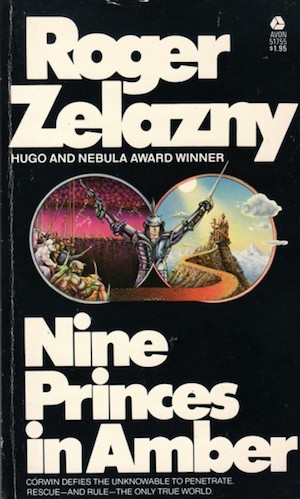
Howard: I’ve already cheated once, so I’m going to do it again and mention two heroes in the place of one: Benedict and Corwin of Amber. When I was in high school, all my spec fic reader friends had read a ton of Zelazny, but I find, more and more, that modern readers only know him by reputation. And that’s a shame. Between Leiber’s Swords Against Death (the first Lankhmar short story collection I read) and Zelazny’s first Chronicles of Amber series (there was a later, sequel series I never liked as well) the doors of my junior high school imagination got blown right off the hinges. I see Lankhmar’s Fafhrd and the Gray Mouser discussed a lot, but not so much Corwin and Benedict.
Todd: I’ve kinda lost track of how many heroes you’re talking about here. It’s supposed to be one, you say it’s two, but it sorta seems like four. Damn, Jones. When you cheat, you don’t kid around.
Howard: Benedict, of course, is the oldest surviving Amberite. And that means he’s at LEAST centuries old. For kicks, he likes to go to alternate realities (shadows) and watch the same battle unfold with minute differences. Not only is he a master tactician and strategist, he’s probably the finest blade amongst a rather sword-happy collection of brothers and sisters.
Todd: I really like this choice (we’ve finally settled on one here, right?) because Benedict is a fine example of a kind of Great Swordsman we haven’t touched on yet: the brilliant tactician. Khlit is a master with a blade, and Jirel exhibits unearthly courage, but Benedict, the eldest and most capable of the heirs to the throne of Amber, is an unmatched master of weapons and a coldly calculating student of all kinds of warfare.
Howard: No, no, I actually mean both brothers should count, here. Benedict and Corwin.
Todd: Dammit, Jones.
Howard: Benedict is the finest tactician and strategist in The Chronicles of Amber, but he’s removed himself from the struggle for the throne. That leaves Corwin to prove himself against his other scheming and lethally dangerous brothers, which he does quite nicely. And because this is Zelazny, he accomplishes it in surprising and original ways across the first five-book saga. Corwin does not begin the book a legendary figure the way Benedict does, but he earns his place the old-fashioned way: through skill and guile.
Todd: And a whole lot of fancy swordplay. I’ll give him that.
Howard: Right.
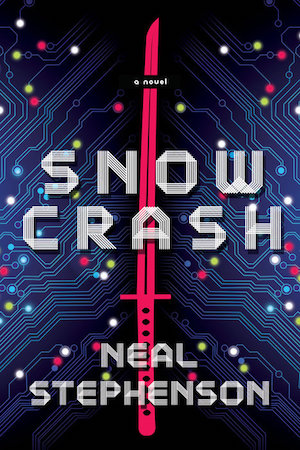
Todd: Okay, my turn again. I’ve lost count of how many swordspeople we’ve covered in our Top Five so far. Six? Nine?
Howard: Let’s say three.
Todd: Fine. For number four, I’m going to cheat a bit too. The fellow I have in mind is one of the greatest literary swordsmen ever created, and he made a huge splash when he arrived in the mid-‘90s. But he’s not really a fantasy character. He’s from a science fiction novel.
Howard: Hmm. I can think of a couple of possibilities.
Todd: The one I’m thinking of is Hiro Protagonist, the supremely gifted swordsman of Neal Stephenson’s 1992 breakout novel Snow Crash.
Howard: Hiro Protagonist? Seriously? That’s his name?
Todd: It’s sort of an in-joke. There’s humor—a LOT of humor—in Snow Crash, and in fact it’s the funniest genre novel I’ve ever read. And I’ve read Terry Pratchett.
Howard: Hiro. Protagonist.
Todd: Let it go.
Howard: You can’t just start throwing cyberpunk novels on the list. If you’d let me make up some rules before we got started, that definitely would have been one of them. This is supposed to be The Greatest Fantasy Swordsmen.
Todd: Snow Crash IS fantasy. Well, the half that occurs in virtual reality is. Much of the book takes place in 21st-century L.A. after an economic collapse. But the rest occurs in the Metaverse, a virtual reality setting for which Hiro wrote much of the underlying code, and where he is a swordsman supreme.
And this is why I think Hiro deserves a place on the list. Whereas old-school swordsmen like Jirel and Corwyn earned their place on our list with old-school virtues, Hiro belongs on it for a very 21st-century reason: he cheats. Or rather, he wins the game because he CREATED the game. He becomes a modern hero not merely through raw swordcraft—skills that are purely physical—but because of his vision and creativity. He is a supreme swordsman because he passionately believes (like everyone else on our list) that the art of the sword is worth studying, and he adds code to the Metaverse to make it possible. He literally wills the art into existence in the Metaverse, and becomes its greatest practitioner in the process. He is the Swordsman Hacker.
Howard: Okay, that’s pretty cool. I’ll allow it.
Todd: Public service announcement time again… Roger Zelazny’s full Chronicles of Amber series is available in a humungous one-volume paperback edition, The Great Book of Amber, from Harper Voyager, and Neil Stephenson’s Snow Crash is still in print from Del Rey.
Your turn again, Mr. Jones.
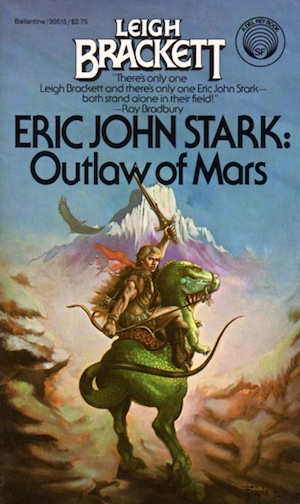
Howard: All right, since we’ve both been cheating I’m going to finish with another cheat. Leigh Brackett’s Eric John Stark….
Todd: Man, you really are cheating. How can Stark be make a list of Top Fantasy Swordsmen when he doesn’t even use a SWORD?
Howard: Oh, he uses a sword plenty of times. I don’t know that Brackett ever singles Stark out as a fantastic swordsman, but he’s certainly a fantastic warrior. And my God, but the stories that Brackett conjures. As her future husband, the late, great, Edmund Hamilton, said when he first saw her writing: “That woman can write!” Headlong pace that just drips with atmosphere and pulls you in and envelops you. Han Solo? Malcolm Reynolds? Those guys? Heck, Brackett was writing about characters like that decades before those two ever appeared on celluloid. Drifters and warriors and survivors just scraping by on the edges of their solar system’s or galaxy’s society , and constantly involved in sweeping adventures. There’s a reason George Lucas approached Brackett to write the script for The Empire Strikes Back, and there’s a reason I number her as one of my three most favorite writers.
Todd: Okay, fine. I have a soft spot for Stark anyway, ’cause he had such rousing adventures. If we can give Jirel points for courage and grit, we can give Stark the edge for sheer entertainment value. Besides, I keep seeing David Gemmell’s Druss the Legend—who’s most definitely NOT forgotten, thank you very much—put forth as one of the undisputed greatest swordsmen in fantasy in internet debates, deservedly so in my opinion. And that guy uses an AXE, for crying out loud. So I call Stark a swordsman, and I’ll sleep just fine at night.
While we’re on the topic, you’re absolutely right about Brackett; she was one of the undisputed masters of the pulp adventure, and the Stark tales are some of her most enduring work. They are in print today from multiple publishers, including Paizo and Phoenix Pick.
I think that wraps up our list. Before we close, just for fun, I have one last question for you: If you had to go into battle on the plains of Mordor, what fantasy swordsman, forgotten or nay, would you want at your side? Elric? Conan? Drizzt Do’Urden?
I’ll go first. For his sheer style and dazzling ability to think on his feet, I think I’d choose the Dread Pirate Roberts, otherwise known as Westley. Your choice?
Howard: At my side? If I want to win? No question. Conan of Cimmeria. He may lose a battle, sometimes, but he never loses the war. He is always triumphant in the end. I’d like to be one of his sidekicks who *doesn’t* perish, though…
Photo: Ricardo Cruz [via Unsplash]
Howard Andrew Jones’ novel Upon the Flight of the Queen, the second book in the Ring-Sworn Trilogy, will be published by St. Martin’s Press in November.
Todd McAulty’s first novel The Robots of Gotham was published by John Joseph Adams Books in June of last year.










